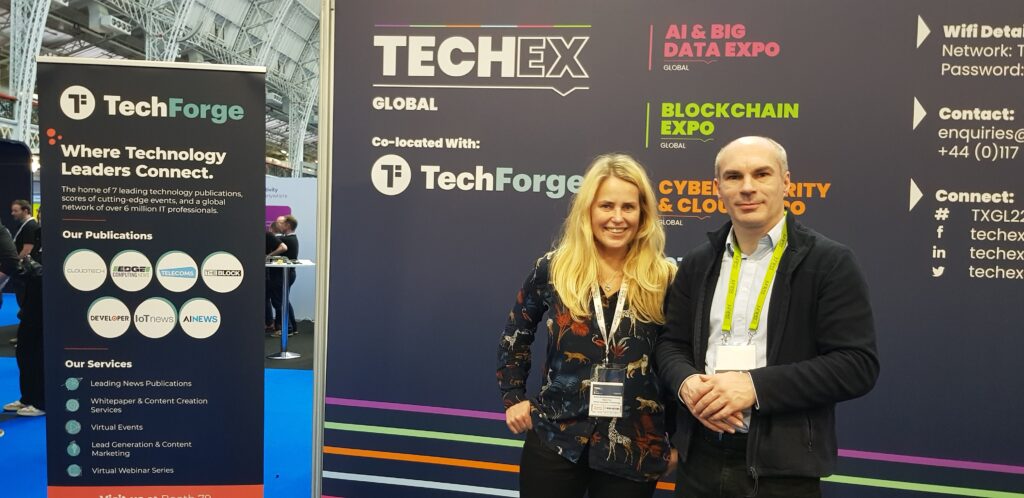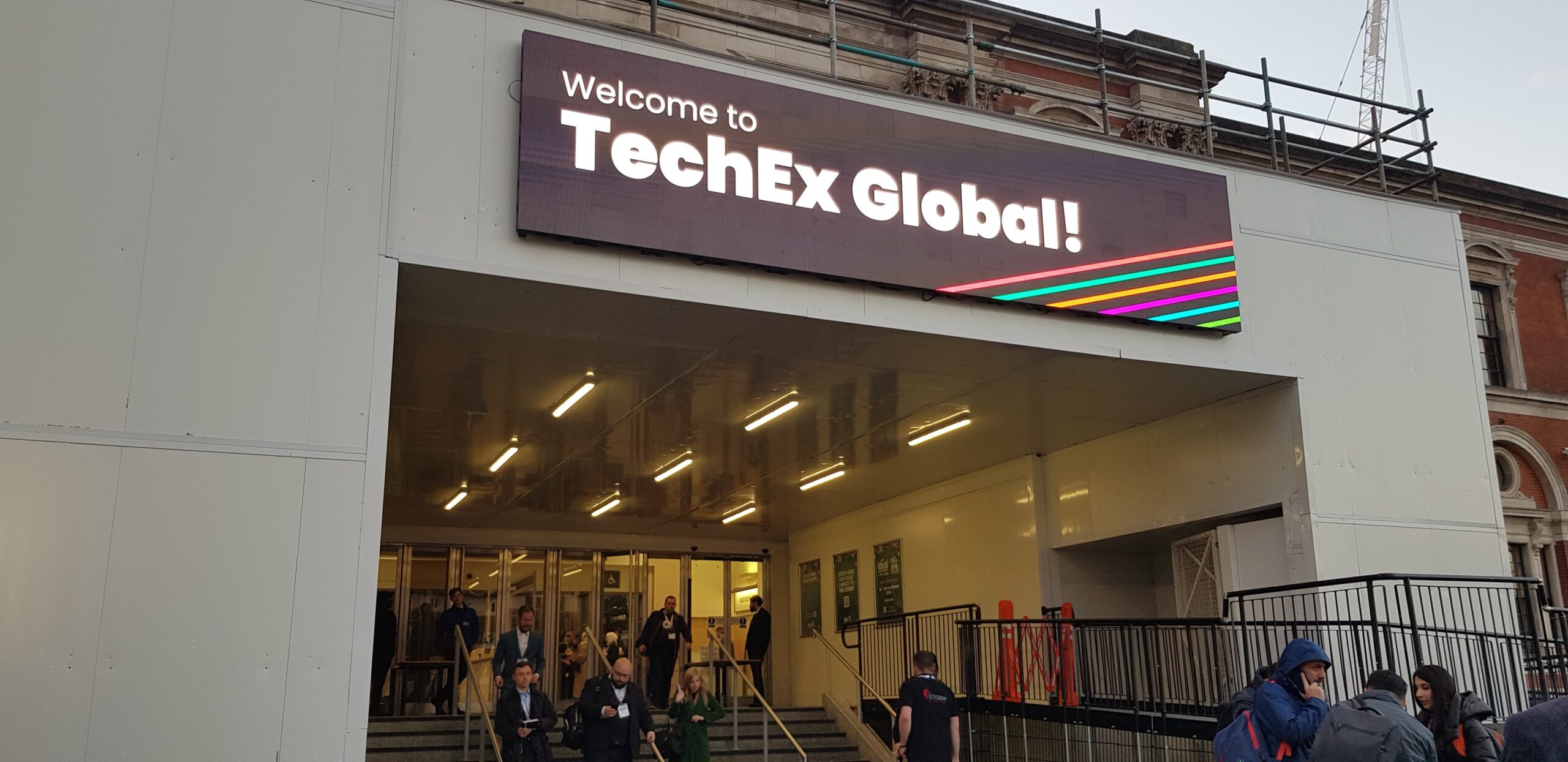From November 30th to December 2nd, two scientific researchers from our faculty, who specialize in cyber security, visited the Techex 2022 Cyber Security & Cloud Expo in London. This annual exhibition and conference is focused on security in the cloud and in general IT cases. The Cyber Security & Cloud Expo is the leading event for zero trust, threat detection and response, training, talent and culture, identity and access management, application security, and data security. There were more than 6,000 visitors, five co-located events, over 150 speakers, and more than 200 exhibitors.
During the expo, we had the opportunity to listen to practitioners and real providers of modern security industry solutions. Exhibitors were happy to share information about their products and also offered to help us solve our problems, including organizing demos, workshops, and internships for our students. As a result, we have established contact with companies related to security software, such as Lead Forensics, who offered a demo of their product for our dean’s office. We also spoke with engineers from Astrocast, who work with security elements for CubeSat, small modular satellites. This contact is very interesting for us, since we have our own project related to CubeSat, which involves our scientists and two PhD students.
We also had conversations with IoT enthusiasts who created the company EMQ. They presented their solution for the MQTT protocol, which is used for telemetry transmission in IoT devices and networks. This protocol is also presented in our laboratories for students in Cybersecurity. We talked with Radev Technology about software, and the information they shared with us changed our vision of face recognition and software for it. This was valuable for us, as we have similar activities with our students.
The list of our speakers and new contacts is also available for our students. They can share their ideas, ask questions, and apply for internships and jobs.
There were also many companies at the expo that work as security consultants or service providers for large telecom operators. They focus on network traffic analysis and anomaly detection, and they showed us the features of their tools. Some of them even have demo versions that we can include in our laboratories or lectures. Many companies also offer hardware for telemetry and analysis of various parameters for general IoT devices. It was interesting for us to compare our ideas and approaches since we have several lectures in our faculty that are strongly related to the Internet of Things.
As part of the conference, a section of speeches and presentations was dedicated to blockchain technology and its many applications. Blockchain technology is a way of storing and sharing data across a network of computers. It allows multiple parties to agree on the state of a shared ledger without the need for a central authority. Blockchain can be used to track, verify, and manage transactions, assets, contracts, identities, and more. Since our Cyber Security students have a course related to blockchain, the papers presented at the conference can serve as inspirations for their laboratory assignments.



